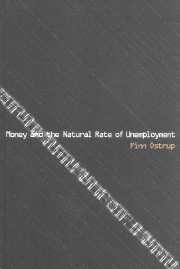Book contents
- Frontmatter
- Contents
- Preface
- Part I Introduction and main assumptions
- Part II The impact of monetary policy and inflation
- 4 Imperfect integration of securities markets
- 5 Monopolistic competition in bank markets
- 6 Utility from securities holdings
- 7 Hysteresis effects from monetary policy
- 8 The impact of inflation on bank earnings
- Part III The impact of monetary regimes
- Part IV Policy implications
- Appendix: Microeconomic foundations
- Bibliography
- Index
7 - Hysteresis effects from monetary policy
Published online by Cambridge University Press: 22 September 2009
- Frontmatter
- Contents
- Preface
- Part I Introduction and main assumptions
- Part II The impact of monetary policy and inflation
- 4 Imperfect integration of securities markets
- 5 Monopolistic competition in bank markets
- 6 Utility from securities holdings
- 7 Hysteresis effects from monetary policy
- 8 The impact of inflation on bank earnings
- Part III The impact of monetary regimes
- Part IV Policy implications
- Appendix: Microeconomic foundations
- Bibliography
- Index
Summary
Introduction
Hysteresis effects imply that real economic variables are affected by the levels of economic variables in prior periods. Among possible sources of hysteresis may be mentioned capital accumulation, effects in the labour market, for example labour skills which are depleted during terms of unemployment, and unexpected inflation which influences production in subsequent periods by changing the real value of financial wealth.
Hysteresis effects cause natural production, which represents the wage setters' optimisation between the real wage and employment, to follow a dynamic adjustment path. Assuming such a dynamic adjustment, one may conceive monetary factors to affect the economy in four different ways: (i) through an impact on the adjustment path towards a steady-state equilibrium, (ii) by affecting the speed with which the economy moves towards a steady-state equilibrium, (iii) through an impact on the stability of the economy, determining whether production moves towards a steady-state equilibrium, and (iv) by affecting the properties of the steady-state equilibrium. Throughout the discussion below we will concentrate only on the last of these four implications, i.e. the impact of hysteresis on the steady-state equilibrium.
The chapter examines a model where hysteresis is caused by capital which is left over from previous periods. It is demonstrated that monetary policy which is unexpected by the wage setters in the initial period influences the properties of the steady-state equilibrium only when there is an output elasticity of capital at the macroeconomic level which is equal to one.
- Type
- Chapter
- Information
- Money and the Natural Rate of Unemployment , pp. 143 - 159Publisher: Cambridge University PressPrint publication year: 2000



